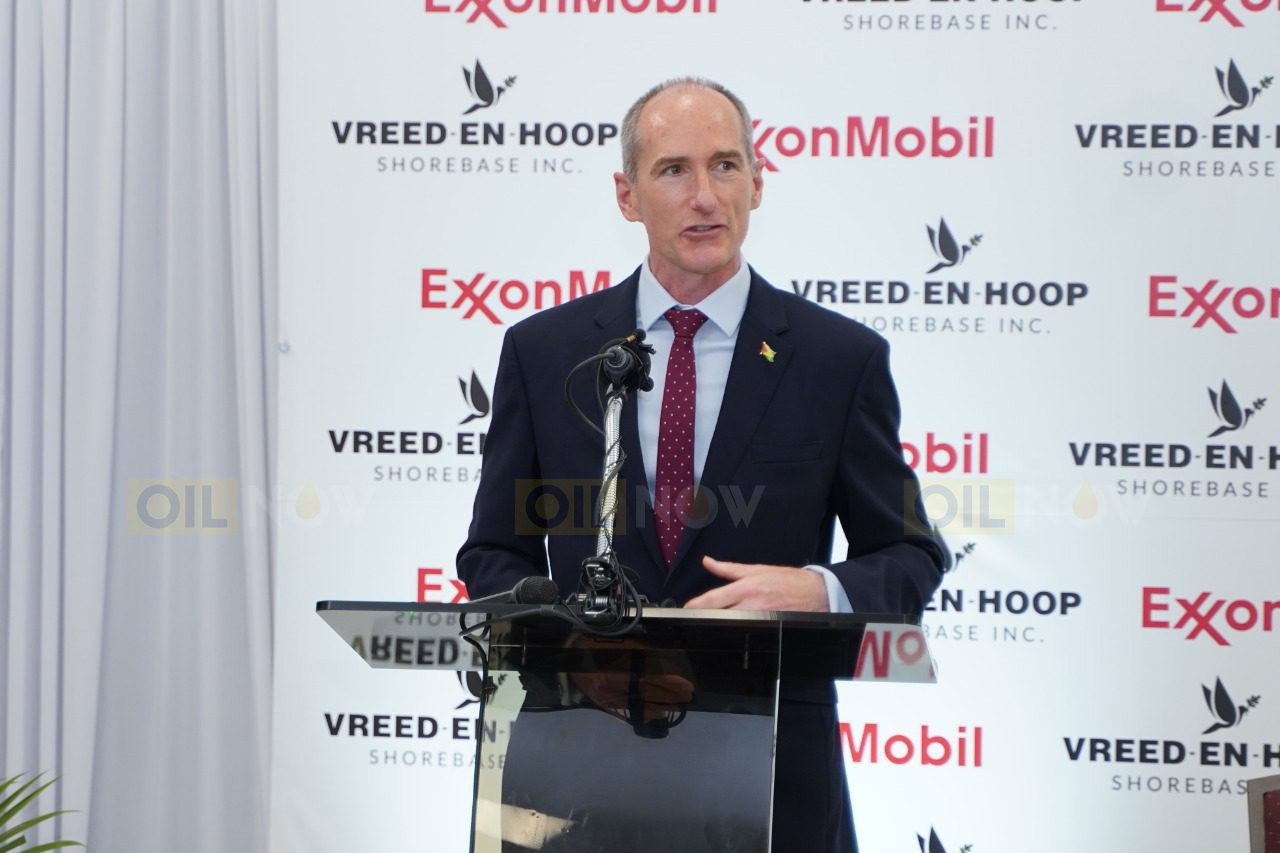Guyana’s growth trajectory changed dramatically when ExxonMobil and its Stabroek Block partners struck oil back in 2015. Since then, the pace of the South American nation’s transformation and development – its oil and gas resources and its infrastructure – have been deemed “unprecedented”.
President of ExxonMobil Guyana Alistair Routledge made the remarks as the industry hit another milestone with the signing of an agreement for the Vreed-en-Hoop Shore Base Inc. (VEHSI), a US$300M project led by Guyanese businessmen to support Exxon’s fourth project in the Stabroek Block – Yellowtail.
In less than five years from the first oil discovery Guyana moved to production and now has a second development online and the third and fourth already approved. The application process for the fifth development at Uaru has already begun.
And that succession, Routledge said, is a preview of Guyana’s future as an energy powerhouse.
“Let me use the word unprecedented… the pace at which we are developing in a country, that I think you all understand, has very little industrial and major infrastructure…that is truly impressive,” he highlighted.
ExxonMobil has made over 25 significant finds already in the Stabroek Block, which holds an estimated 10 billion oil-equivalent barrels.
But the company’s success does not stop there. Chief Executive Officer (CEO) Darren Woods had said that by the end of the decade, production could increase to more than one million barrels per day.
On a visit to Guyana in February, Woods even said that Guyana’s oil and gas success was “unmatched” in modern history.
The company sees potential for 10 floating production, storage and offloading (FPSO) vessels to develop the current proven resource estimate. Presently, it has determined that six FPSOs will be operating offshore by 2027, producing about 1.2 million barrels per day.



